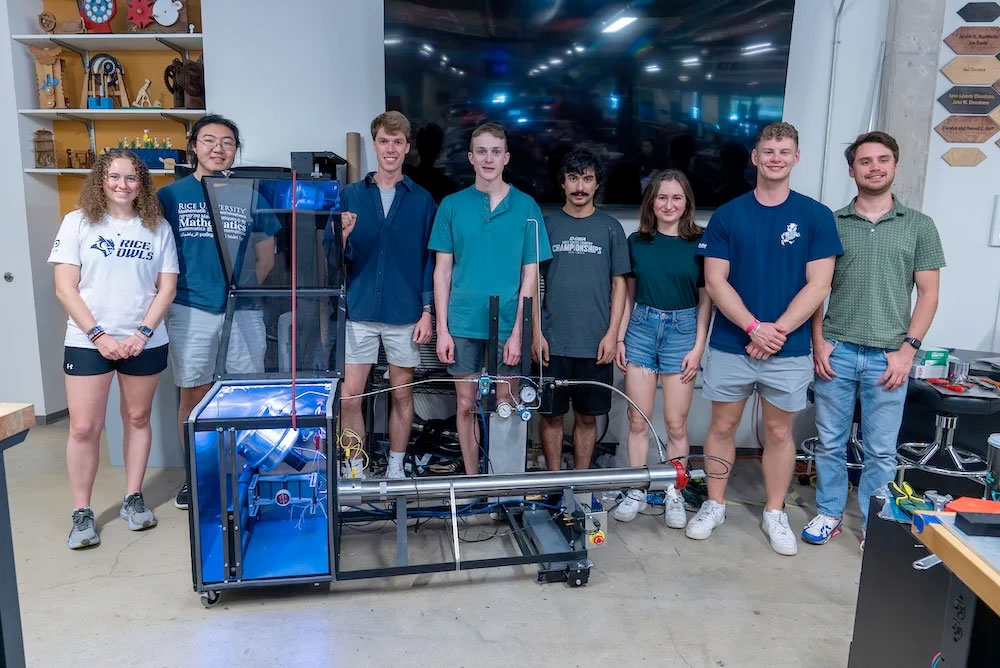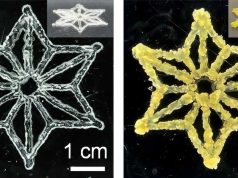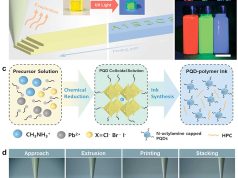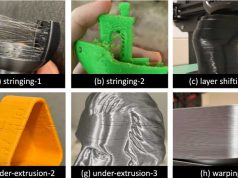A group of Rice University students have developed a metal 3D printer based on cold spray technology. Their printer uses pressure and speed instead of heat to produce metal parts. Their work could expand the repertoire of metal additive manufacturing techniques and both reduce the cost and improve the quality of manufacturing or repairing complex one-off metal parts.
The AeroForge team – consisting of Eli Case, Julianna Dickman, Garrett French, Galio Guo, Douglas Hebda, Grant Samara, Davis Thames and Aasha Zinke – demonstrated the viability of their prototype by successfully depositing copper. The project won an Excellence in Capstone Engineering Award and first place in the Willy Revolution Award for Outstanding Innovation at the annual Huff OEDK Engineering Design Showcase on April 11.
Traditional metal 3D printers typically use a laser to melt metal powder into a specific shape. However, the melting process can greatly affect the properties of the product. Aasha Zinke explains: “The cold spray technology we use uses speed instead of heat and accelerates metal particles to such an extent that they adhere to a substrate and deform.”
Cost-effective metal 3D printer
The team put a lot of work into reducing costs, as conventional metal 3D printers can cost over 1 million US dollars. AeroForge built their prototype for under 5,000 US dollars. “One of our big innovations is the huge cheapening of the system,” said Samara. Many parts were manufactured in-house, while others, such as the patented nozzle, required new manufacturing processes.
The device is suitable for the production and repair of metal parts with complex structures, such as components in industrial plants, vehicles or airplanes. Industries with metal components such as automotive, oil and gas or defense can suffer high losses due to supply chain disruptions. The team therefore hopes that its low-cost device will offer a viable alternative to manufacturing or repairing parts on demand.
Compared to welding, cold spray technology has advantages: “Normally when repairing metal parts, you can only remove material,” said Thames. “With this process, however, we can build up material and then mill it off. It also allows us to avoid uneven material properties that can occur during welding due to different melting temperatures.”
The system consists of a gas tank for nitrogen, valves, pressure and temperature monitoring, a pressure vessel to heat the gas to 450°C, a powder feeder and a custom-made nozzle. “Although the gas is heated, it is a cold gas spraying system because the gas expands rapidly in the nozzle and cools quickly,” explained Dickman. “The particles never melt, they never see high temperatures – the heat is just to accelerate the gas.”
Subscribe to our Newsletter
3DPresso is a weekly newsletter that links to the most exciting global stories from the 3D printing and additive manufacturing industry.




























